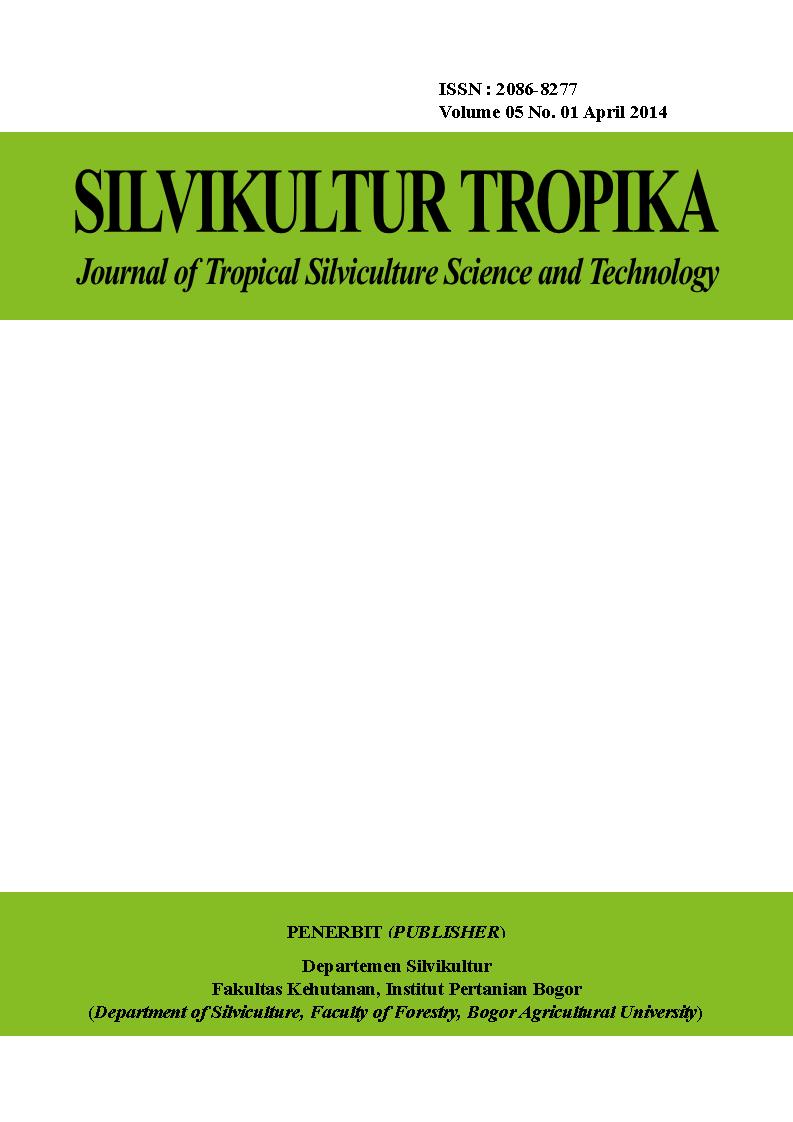-
Arum Sekar Wulandari
Departemen Silvikultur, Fakultas Kehutanan IPB
-
Sabar Sampulan Nasution
Departemen Silvikultur, Fakultas Kehutanan IPB
Abstract
The availability of minimal seed requires alternative reproduction system of paulownia. In vitro culture is used as one of the solutions in the reproduction of paulownia. In in vitro cultural contamination is the main problem in the initiation phase. This research studies about the influence of sterilization treatment to the percentage of contamination, browning, and induction of paulownia bud. Sterilization techniques give the same effect against the percentage of contamination, browning, and induction of paulownia bud. The sterilization technique used in the study consisted of four treatment such as A (fungicide 0.2 g/L, bactericidal 0.2 g/L, NaOCl 20%, 15%, 10%), B (fungicide 2 g/L, bactericidal 2 g/L, NaOCl 15%, 10%, 5%), C (fungicide 0.2 g/L, bactericidal 0.2 g/L, detergent 20%, 15%, 10%), dan D (fungicide 2 g/L, bactericidal 2 g/L. Contamination that happened 93.96 % caused by bacteria and 11.5 % by fungi. Eksplan that is free from contamination and browning show the development of the aksilar. There is the development of a callus on some eksplan because the rates of hormone endogenous which is quite high. It strengthened by 100% the formation of callus on the stage multiplication by the addition of regulator substance growing auksin in small quantities.










